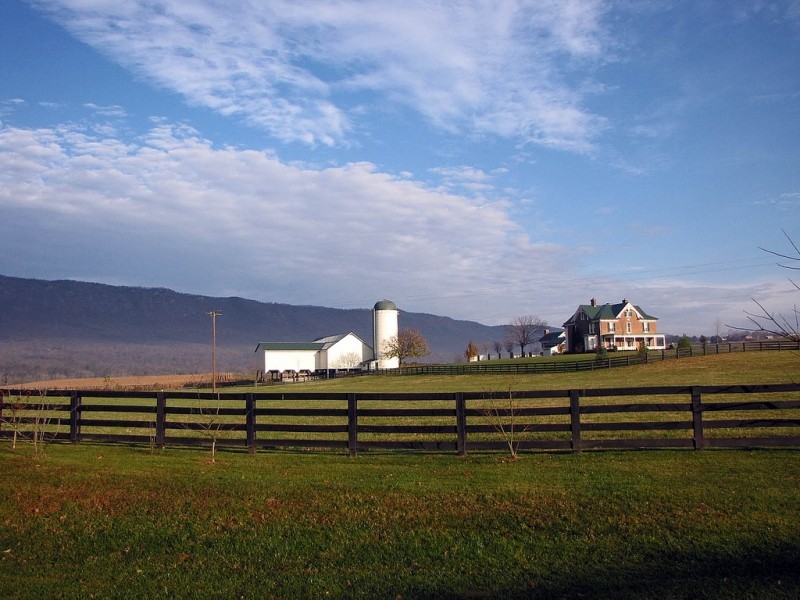In 1935, 6.8 million family farms existed in the U.S. The crush of urbanization has nearly forced the family farm into obsolescence. By the 21st century, the concept of a small family farm—one that has been owned and operated by one family for possibly several generations—fell to a mere one-third of the original 1935 total. A productive and important class of society may be lost as a result.
Accompanied by an ever-increasing disparity between dwindling income and soaring expenses, fewer and fewer members of the current generation are willing to commit their lives — alongside work days that tally to 12 or more hours each day — to a family farm. As a result, the American Farmland Trust estimates an acre of U.S. farmland goes into development every two minutes. Farmers are often retiring without a younger family member willing to assume farm management responsibilities, thus removing multi-generation ranches and farms from production. Statistics show that less than a third of farms have a designated successor in the family.
What’s the result of dwindling family farms for you, your community, and your local economy?
When corporations produce our seeds, process our meat and milk, and serve as our grocery retailers, they dominate our food system and have enormous power to control markets and pricing, They also influence food and agricultural regulations. Sure, some say that large agribusiness is efficient and offers the capacity to produce huge quantities of cheap food. However, many hidden costs of large agribusiness result in unintended consequences, including declining rural economies, loss of farmer livelihoods, environmental damage, and weakened overall public health. What are the costs when we lose small family farms?
Purity of product is diminished: You can nearly always count on the milk from local farmers to be, well, local. Giant agribusinesses merge contain the milk of hundreds of cows. Purity is also lost when there are more steps between you and your food’s source, as those steps increase the more chances for contamination. Food grown in distant locations has the potential for food safety issues at harvesting, washing, shipping, and distribution.
Local control wanes: When you see your local farmers at the market, it’s because they’re involved in most of the farm’s production processes. When giant agribusinesses move into local areas, they also take part in the distribution, processing, storage, and retail of farm products, removing local control. When family farms stay under local control, they tend to have autonomy, protect the natural resources more, and contribute to multiple social classes. The World Health Organization worries, in particular, about what they label “an unfair transfer of valuable land and water resources from the poor to the wealthy.”
Subsidies hurt: Small family farms don’t produce cheaply in large quantities, store over long periods, or ship easily. So, when subsidies keep prices artificially low on the world market due to surpluses and chronic overproduction, local, smaller family farms can’t complete. As a result, their land is often swallowed by larger conglomerate farms. All of these subsidies ensure that farm incomes are much higher than the incomes of most Americans. Farm programs are welfare for the well-to-do, and they induce overproduction, inflate land prices, and harm the environment.
Loss of family stability: A significant indicator of a healthy society is the stability of the family unit. As small family farms vanish, so, too, do infrastructures that lead to healthy communities. An agricultural lifestyle presents wonderful conditions for children due to the variety of stimuli, allowing them to channel energy into animal care, egg collection, vegetable growing, and harvesting. For adults, farm life provides time to think, a healthy diet, and a built-in workout routine.
Jobs move away from rural areas: Small family farms provide jobs for a community. When they disappear, many jobs evaporate with them. Research has shown that family farms provide multiple economic benefits for their communities, as they employ more people per acre than large, industrialized farms and are more likely to purchase inputs locally, keeping more money in their local economies. Studies have shown that small, locally owned farms have a multiplier effect: for every dollar the farm spends, a percentage remains in the local economy, contributing to the economic health of the community.
Economic instability: Areas having more small farms have lower poverty and unemployment rates, higher average household incomes, and greater socioeconomic stability. When small family farms disappear, main streets become less active, fewer retail businesses can survive, and less money is spent in the community. While it seems counterintuitive, large agribusinesses are associated with lower incomes, more poverty. and economic inequality.
Environmental benefits: When family farms are passed down, generation to generation, location-specific knowledge is passed along, too. Small family farms have fewer acres to manage, so farmers are in tune with subtleties of their area’s specific soil types, climate, and pest populations. The land of a small family farm allows the production and rotation of diverse crops in systems integrated with other ecosystems on the farm. As a result, these farms are often quite biodiverse. By contrast, large farms tend to restrict production to one or two crops, reducing biodiversity. The industrial methods used by large farms also adversely affect soil and water quality and increase global warming emissions.
Creating systems that support small family farms
Many consumers today are interested in healthy eating and want to know how their food is produced and by whom. Consumers are often willing to pay more for local food from family farms. This has led to the rapid growth of farmers markets, community supported agriculture (CSA) programs, local grocery stores, and “farm-to-fork” programs at restaurants, schools, and other institutions.
In today’s society, more people have come to realize the importance of small family farm agriculture could regain great prominence. Increasing sustainable food production results from concerned consumers making informed, responsible choices. By purchasing sustainable foods from your local farmer or grocery store, you support the farmers who are raising food responsibly and actively encourage the growth of a more sustainable food system. Wherever possible, instead of giving your money to industrial agriculture, give it to a sustainable farmer.
There’s also another way to stabilize small family farms. Large-scale food buyers such as supermarkets and hospitals should purchase their fruits and vegetables from local farmers. In doing so, they would create a market niche and provide communities a much-needed self-sustaining economic boost. Yes, there are many challenges to be overcome when larger businesses depend on local farms, including opportunity costs for transitioning farmers, the difficulties of adopting new methods and different equipment, and lack of access to capital or crop insurance. State and federal governments can help by offering financial incentives to help beginning and transitioning farmers grow the foods institutional and intermediate buyers want. They can provide research and technical assistance to help farmers adopt midsize, diversified farming systems. They can invest in infrastructure and coordination to get healthy food from farm to market.
Photo credit: scott1346 via Foter.com / CC BY


